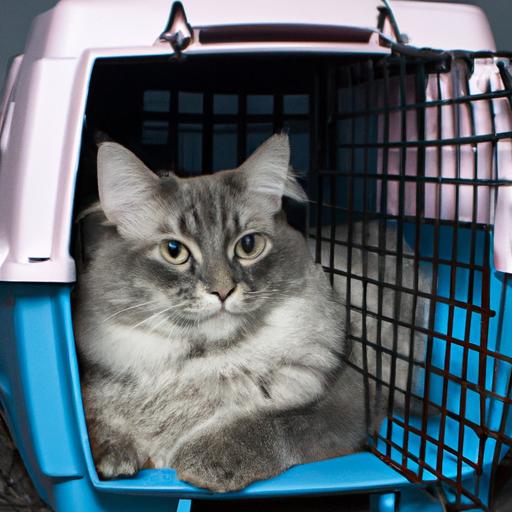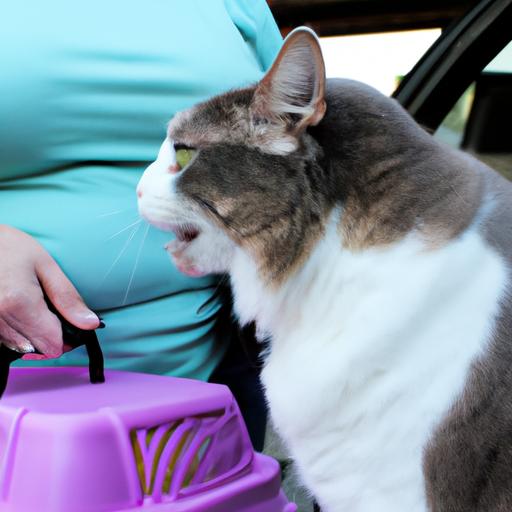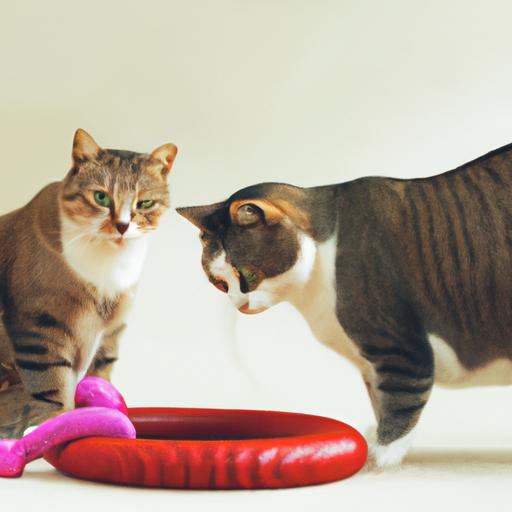
Tips for Successful Cat Carrier Familiarization
Discover effective tips for successful cat carrier familiarization. Learn how to make vet visits stress-free and create positive associations with carriers.
Introduction
Are you a cat owner who dreads the struggle of getting your feline friend into a carrier? We understand your frustration. Many cats associate carriers with stressful vet visits and tend to resist them vehemently. However, with a little patience and the right approach, you can successfully familiarize your cat with their carrier, making those vet visits a breeze. In this article, we will provide you with tips and techniques to ensure a smooth cat carrier familiarization process.

Tips for Successful Cat Carrier Familiarization
Gradual Introduction to the Carrier
One of the key steps in successfully familiarizing your cat with their carrier is to introduce it gradually. Cats are creatures of habit, and abrupt changes can trigger anxiety. To ease their transition, follow these steps:
-
Placing carrier in a familiar environment: Start by placing the carrier in an area where your cat spends most of their time. This will help them become accustomed to the carrier’s presence and associate it with their safe space.
-
Leaving carrier open and accessible: Keep the carrier door open at all times, allowing your cat to explore it freely. Place treats or toys inside to encourage positive associations.
Positive Associations with the Carrier
Creating positive associations with the carrier is crucial for overcoming your cat’s aversion to it. By making the carrier an appealing and rewarding place, you can change your cat’s perception. Consider these tactics:
-
Using treats and rewards: Reward your cat with treats and praise whenever they voluntarily enter the carrier. This positive reinforcement will help them associate the carrier with positive experiences.
-
Using pheromone sprays or calming aids: Pheromone sprays or calming aids can create a soothing environment inside the carrier, reducing your cat’s anxiety. Consult with your veterinarian about the best product for your cat.
Creating a Comfortable Space Inside the Carrier
To further enhance the carrier’s appeal, make sure it provides a comfortable and inviting space for your cat. Here’s what you can do:
-
Adding familiar bedding or clothing: Place your cat’s favorite blanket or an item with their scent inside the carrier. The familiar smell will make them feel more at ease and create a sense of security.
-
Ensuring proper ventilation and temperature: Cats are sensitive to their surroundings. Make sure the carrier is well-ventilated and at a comfortable temperature. This will help your cat relax and reduce any potential discomfort.
Practice Sessions and Short Trips
Once your cat starts feeling more comfortable with the carrier, it’s time to gradually introduce them to the idea of being inside it for longer periods and taking short trips. Follow these steps:
-
Gradually increasing time spent in carrier: Begin by closing the carrier door for short periods while your cat is inside. Slowly increase the duration of these practice sessions to help them acclimate to being confined.
-
Taking short car rides for familiarization: Once your cat is comfortable spending extended periods in the carrier, take them on short car rides around the neighborhood. This will familiarize them with the sensation of movement and help them associate it with positive experiences.
FAQ (Frequently Asked Questions)
How long does it take for a cat to get used to a carrier?
The time it takes for a cat to get used to a carrier can vary depending on their individual temperament and past experiences. Some cats may adapt quickly within a few days, while others may require several weeks of consistent training. Patience and consistency are key in the process.
What if my cat becomes anxious or stressed in the carrier?
If your cat shows signs of anxiety or stress while inside the carrier, it’s essential to address their concerns. Ensure the carrier is comfortable, use calming aids if necessary, and consult with your veterinarian for additional guidance. Never force your cat into the carrier or punish them, as it can worsen their fear and resistance.
Can I use a carrier for purposes other than vet visits?
Absolutely! Familiarizing your cat with their carrier opens up opportunities for various situations, such as traveling or emergency evacuations. By associating the carrier with positive experiences, you can minimize stress in these circumstances.
Is it necessary to familiarize kittens with carriers?
Yes, it is crucial to familiarize kittens with carriers from an early age. This helps them build positive associations and prevents fear or resistance in the future. Start by incorporating carrier familiarization into their playtime and gradually increase their exposure to it.
Conclusion
In conclusion, successfully familiarizing your cat with their carrier is a process that requires patience, consistency, and positive reinforcement. By following the tips outlined in this article, you can transform the carrier from a source of stress into a place of comfort for your feline companion. Remember, a relaxed and cooperative cat during vet visits benefits everyone involved. So start implementing these tips today, and watch as your cat becomes a carrier-loving traveler!























